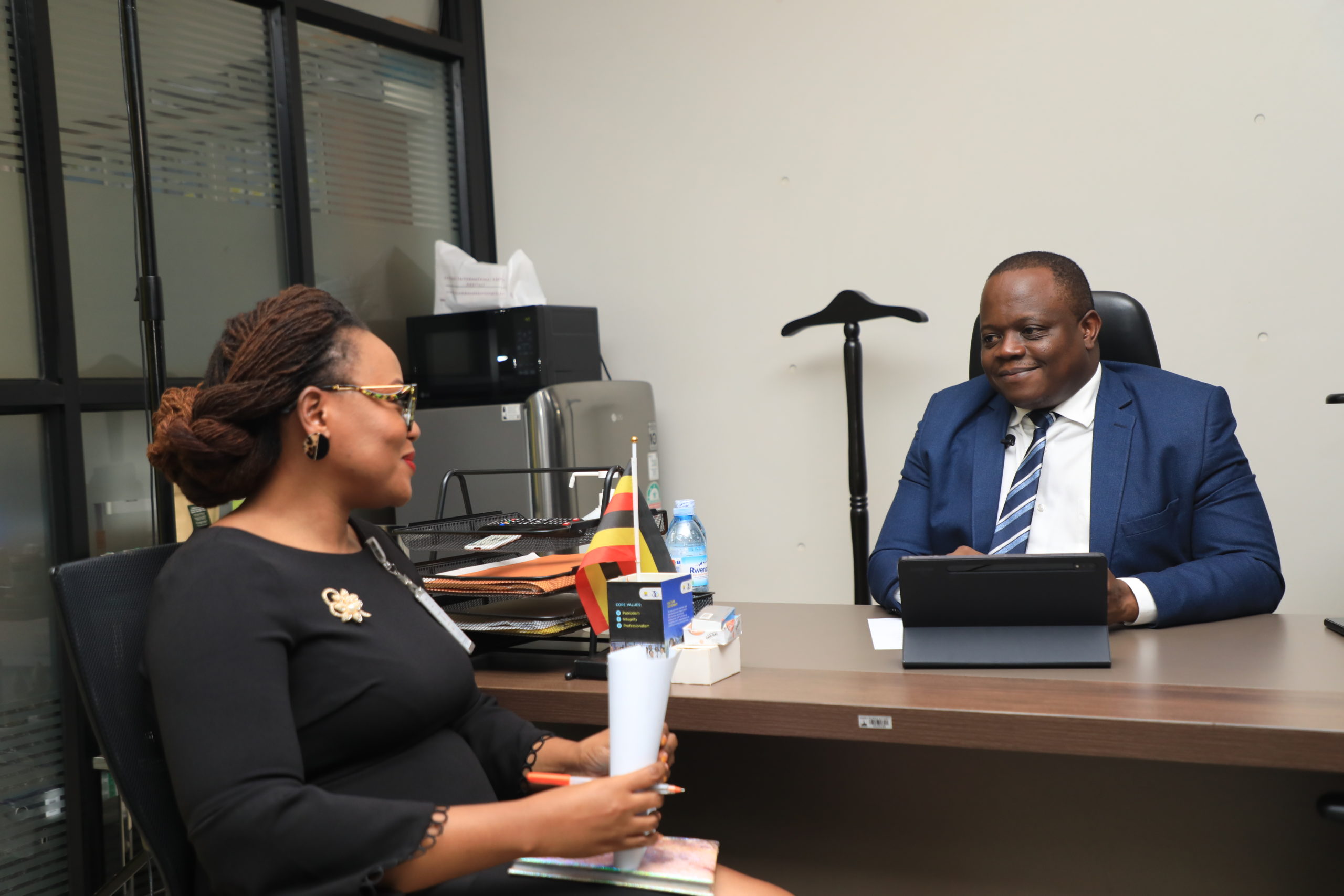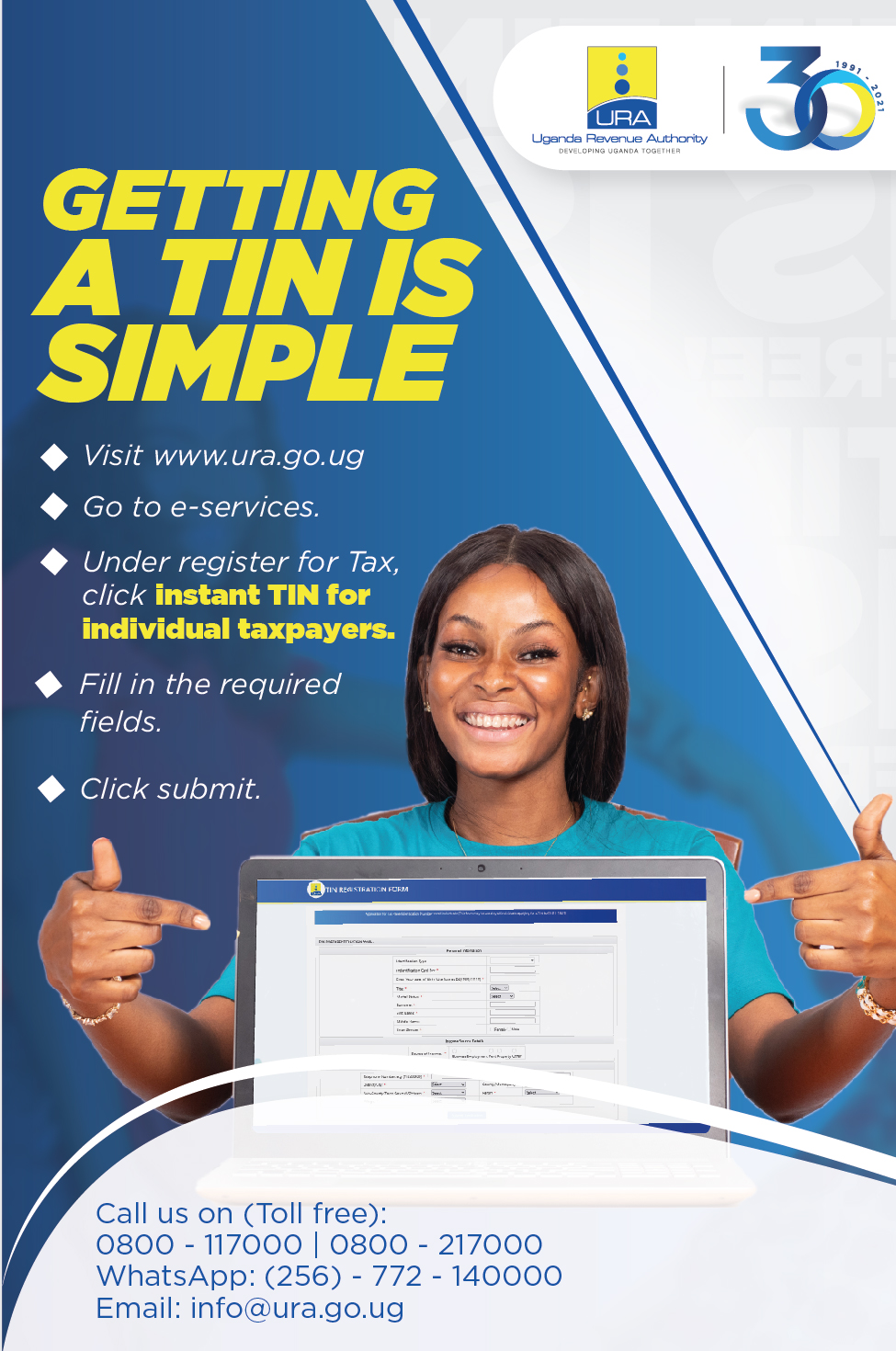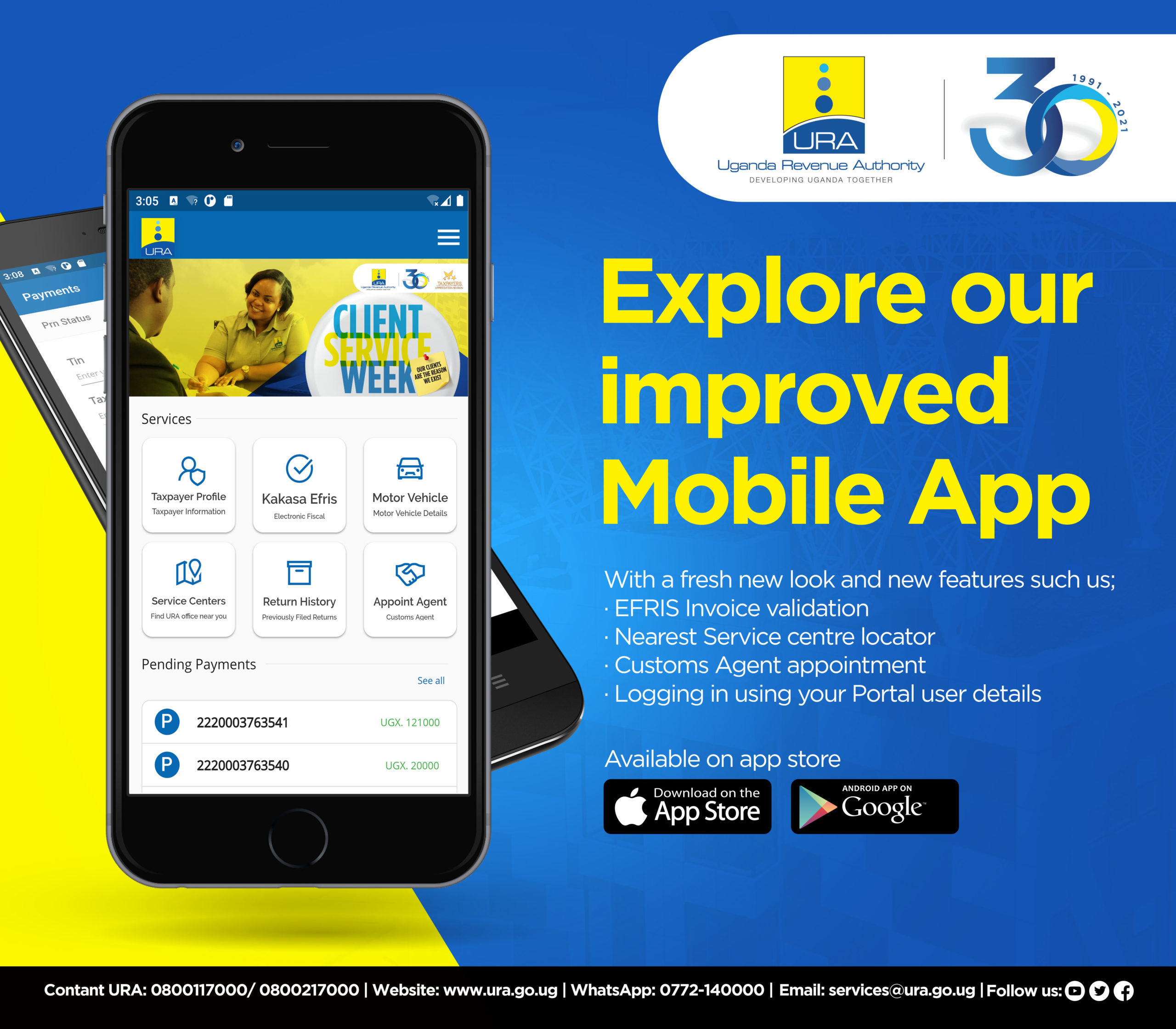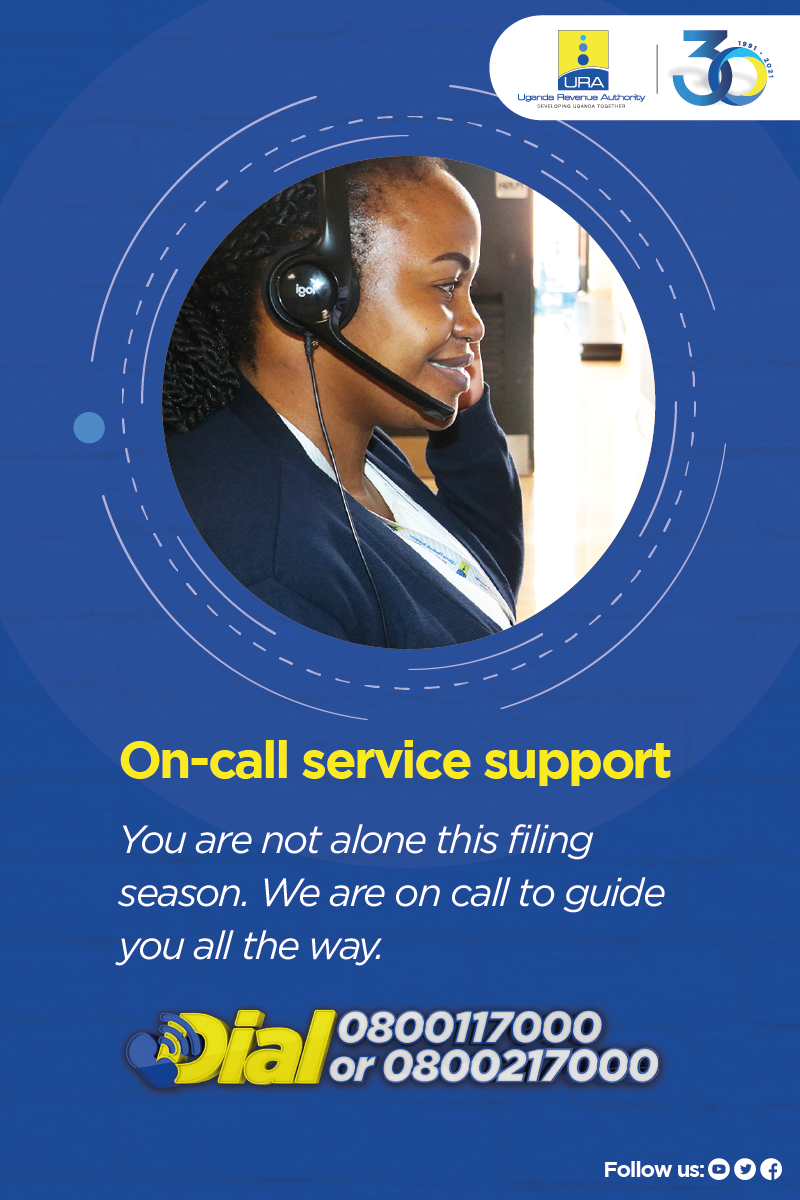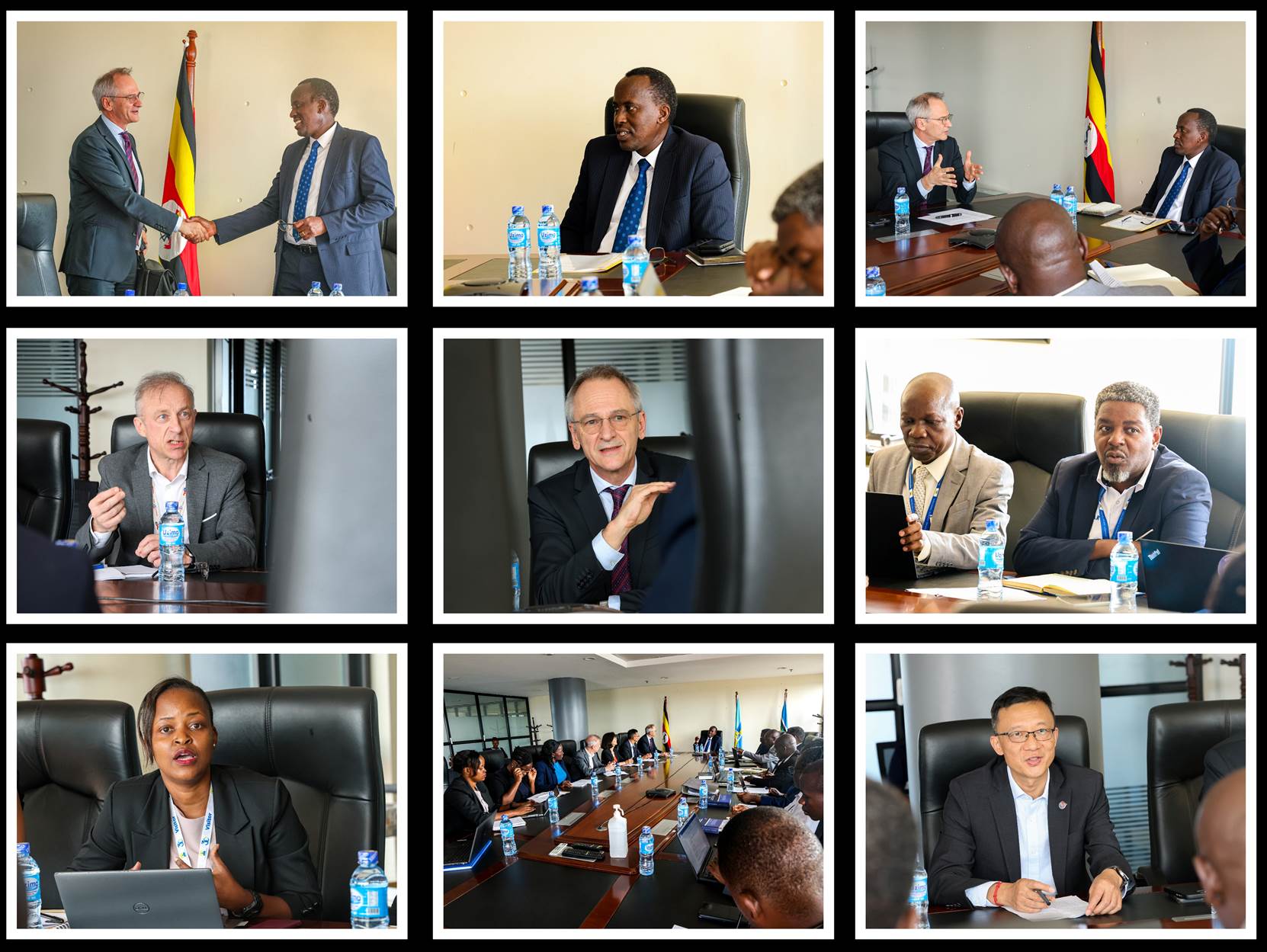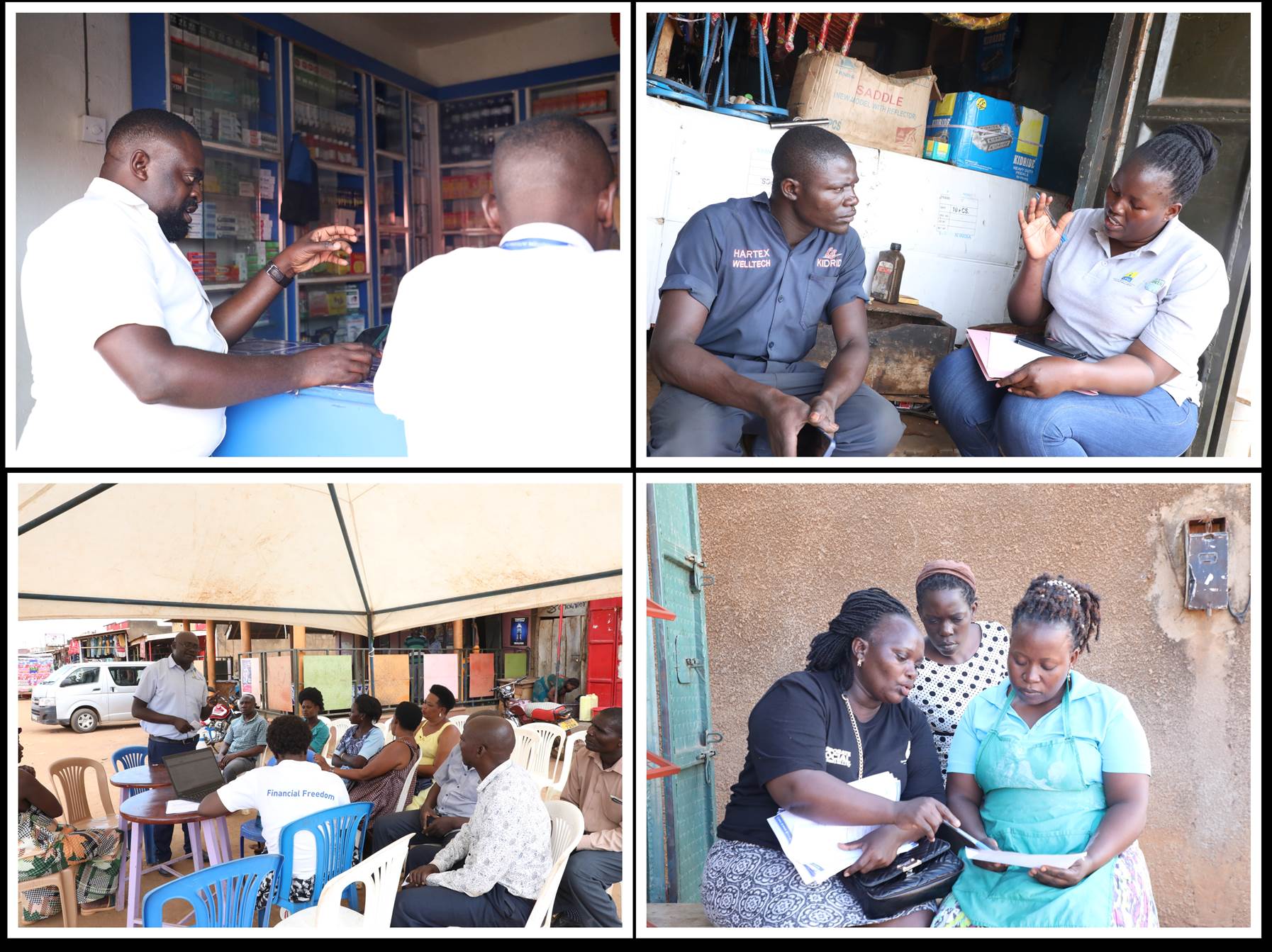By Rytter Muzira
Organizations as large as URA evolve to meet the demands placed on them. Whether it’s adapting to the 24/7 online world or making door-to-door engagements, the institution is constantly changing. What won’t alter though is what URA is here to do. URA’s purpose is incredibly straightforward and can be found in her vision – “A transformational Revenue Service for Uganda’s Economic Independence”.
At the heart of this vision is the URA Digitalisation and Information Technology strategy, which aims to improve efficiency, effectiveness, and service delivery to maximize revenue growth and increase customer service satisfaction. Rytter Muzira, the Supervisor Media Management engaged with Robert Mutebi, the Commissioner of Information Technology and Innovation on the progress of this strategy.
What are the goals for the ICT department in URA and what are some of the steps you are taking to achieve them?
As a department, we have three goals: to deliver services instantly, to include everyone in our services, and to ensure our systems are interoperable. One of the key factors for achieving these goals is having a stable and reliable system. Without a functioning system, we cannot provide any service. That is why we aim to maintain system availability of 99.99%. To do this, we have built a new data centre and we have been updating our legacy system regularly.
We have streamlined our customer journeys by implementing several automation. Our goal is to simplify the touch points for our customers and reduce the need for them to visit our service centres. We have introduced a mobile-based touchpoint that allows them to access our services from anywhere. We have also launched a contact centre, a WhatsApp channel, and a Customer Relationship Management system that integrates all the emails we receive from our customers. As a result, we have seen a significant decrease in the traffic at our URA tower and service centres. Moreover, we have established service levels to monitor the speed and quality of our service delivery. If the service level is not met, we have a management escalation process to ensure customer satisfaction and improve our SLAs.
We are committed to providing inclusive services to suit the diverse needs of our different segments – from large, medium, and small. We are reaching out to the informal sector and ensuring that our products are suitable for everyone. For example, when filing for rental income tax, both large corporations and individuals use the same forms. We have introduced the USSD code to enable any taxpayer, whether big or small to pay their income tax. USSD is a familiar platform that people use to pay for their yaka, water bills, and other services. Today, if a driver wants to renew their driving permit, they don’t have to walk to a URA office. They can simply pick up their phone dial *285# and pay for their renewal. We are constantly working to simplify our services and make them more accessible. One of our upcoming initiatives is to offer multiple languages on our web portal, to cater for that segment of clients who find it hard to understand the complex English that we use.
We aim to have systems that are interoperable, meaning that they can communicate and exchange data with other systems in our ecosystem. Revenue administration is not an isolated function, but rather a part of a network that involves various partners, such as Ministries, Departments, Authorities, banks, telecoms, and the private sector. We have initiated a technology revamp project that is creating integration layers to standardize and facilitate the data flow between our systems and those of our partners.
How do you ensure that the ICT systems and solutions you provide are aligned with the URA’s strategic goals and operational needs?
We are transforming URA from an authority to a service organization that puts the taxpayer first. We want to make it easy for taxpayers to fulfil their obligations, which are to register, file, pay, and receive accurate reports. We have identified and removed the barriers that prevent them from doing so, such as agents who charge for TIN, complicated forms to file, and limited payment options. For example, we have designed the USSD channel for the boda boda guy who cannot read English but wants to pay his advance income tax of UGX 20,000. We have also enabled taxpayers to file using auto-populated web forms that they can verify and correct if needed. We have simplified and digitized the payment of tax because we do not accept cash. By enhancing the customer journey and the services we offer, we are aligned with the goals of URA.
How do you balance the need for security and privacy of the URA’s data and systems with the need for accessibility and interoperability with other stakeholders, such as taxpayers, government agencies, or private sector partners?
Our data is critical and sensitive, and we have a responsibility to protect its integrity and availability. We do not want to compromise our clients’ competitive edge in the market by exposing their data to unauthorized parties. Therefore, we follow strict data governance standards and policies, which are overseen by a cross-functional committee. We also respect the privacy and confidentiality of our data subjects and comply with relevant regulations.
To ensure the security of our data, we adopt a defense-in-depth strategy that covers various dimensions of security, from human to physical to system. First, we educate our staff to follow best practices such as securing their usernames and passwords and respecting their roles and permissions. We restrict access to the data centre and USB ports to prevent unauthorized entry or leakage of data. Third, we fortify our system with firewalls and security layers at every level of the technology stack, from the databases to the applications. Fourth, we train our security teams on the latest threats and countermeasures. We take data security very seriously and we continuously monitor and improve our processes and technologies to safeguard our data assets.
What are the main objectives and challenges of your department in terms of ICT development and implementation?
The challenge of training and retaining good talent in technology. Technology is a fast-paced and dynamic field that requires constant learning and adaptation. Unlike many other professions, the skills and knowledge that are relevant today may become obsolete and useless in a few years. Therefore, we must be lifelong students who keep up with the latest developments and innovations in our field.
However, this also poses a challenge for training and retaining good talent. Technology also enables digital transformation across various industries, creating a high demand for skilled workers who can handle large volumes of data and extract insights for strategic decision-making. However, there is a shortage of people who have the expertise and experience to work with complex and evolving technologies. Therefore, attracting and retaining such talent is highly competitive and difficult
Moreover, in a government setting, we also face the challenge of procurement processes that are slow and rigid. They may take up to two years to complete, while the technology we are procuring has a shelf life of three to five years. By the time we acquire the technology, it may already be outdated or surpassed by a better one. This makes it hard to plan and anticipate the future needs and trends of the sector.
To overcome these challenges, we have adopted some strategies that can help us save time and cost, as well as improve our efficiency and effectiveness. One of them is to use framework contracts that allow us to avoid going through the lengthy process every time we need to procure something. Another one is to do in-house development of projects, where we hire people on a temporary basis to work on a specific project and then disband them when it is done. This way, we can tap into the diverse and dynamic pool of talent available in the market and save time and money that would otherwise be spent on the procurement process.
Data security is a vital aspect of any IT system, especially when it involves sensitive and confidential information. Users of IT systems have basic expectations of the risks and challenges that they may face, and how they can be mitigated. Three of these expectations are data confidentiality, data integrity, and service availability.
Data confidentiality means that the data is only accessible to authorized parties, and not exposed to unauthorized ones. This is particularly important when we exchange data with banks and other international bodies. To ensure data confidentiality, we have built systems that define roles of access, approval levels, and data classification. We also provide user training on data protection.
Another expectation is data integrity. As data owners, we respect the originality of the data we receive and do not alter it without authorization. We have experienced cases of data tampering in the past, but we have taken steps to prevent that from happening in our databases by monitoring any changes in the data and flagging any anomalies. We have also established a system of checks and approvals for any critical data points, such as ledgers or assessments so that no change can be made without proper verification and authorization.
Finally, we also always value the availability of our services. We want to avoid any downtime that could disrupt our operations or compromise our security. We have built redundancies, firewalls and segments to protect our systems from cyber-attacks and ensure that our services are always accessible to our users.
How do you foster a culture of innovation and collaboration within your department and across the URA, and what are some of the best practices or lessons learned from your experience?
Innovation is not a solo act. It requires the input and insights of people who are closest to the customers and their challenges. These are not only IT people, but also lawyers, station workers, border officers, and anyone else who witnesses the daily struggles that taxpayers face. Our role in IT is to find ways of automating and simplifying the processes for everyone. At URA, we are encouraging people to speak up, especially about the pain points in their service areas. We have managed to prevent a lot of fraud by addressing those pain points. It is a collaborative effort, where we work with teams from different departments and conduct assessments like TADAT on our service, compliance, and availability. Based on those assessments, we identify and prioritize the biggest problems and focus on solving them.
How do you measure the impact and effectiveness of URA’s ICT interventions on revenue collection, taxpayer satisfaction and staff productivity?
Digitalization should achieve two goals: satisfying the customer and optimizing the organization’s resources. One way to do this is to leverage technology to extend our reach beyond human limitations. For example, by rolling out a USSD channel, we can offer superior service than a physical station. This channel will allow anyone with a phone to access the URA services at any time of the day, regardless of the URA office hours. This will make it easier for taxpayers to fulfil their obligations and enjoy the benefits of the URA way. We estimate that nearly 44 million Ugandans will have tax services in their hand through this channel. This will not only result in happy customers but also in more efficient use of our resources internally.
How do you keep abreast of the latest trends and developments in ICT, and what are some of the emerging technologies?
Currently, we are thinking about using artificial intelligence to analyse the sentiments of our customers from every touchpoint. Whether they write an article, tweet, LinkedIn post, Facebook post, email, or CRM platform comment, we want to understand how they feel about our services. We are also exploring the possibility of using a machine to classify and process requests from our relationship management tool without bothering a taxpayer.
We are also interested in blockchain technology with our various stakeholders. Blockchain is a way of updating each other whenever there is a change and keeping a record of the transactions. This gives us a complete view of the taxpayer. This kind of model is based on mutual benefit and trust for everyone.
Any message to the Public?
Taxpayers are our partners in achieving our goals. We aim to be more transparent, visible, and fair in our work and hope that our taxpayers will cooperate with us for our mutual happiness. We have a bright vision for the future of our nation, as we collect the revenue that supports the efficient running of government programs.


